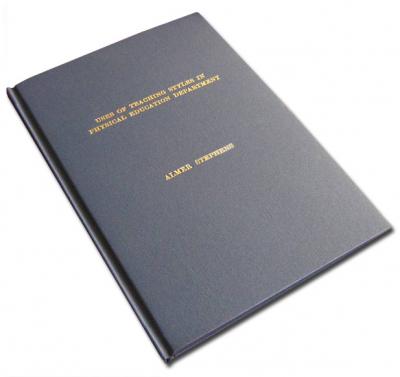Dissertation chapter 1
Around 1900, Carl Sapper gave Burkitt a copy which he had made of a Kekchi will dated December 3, 1583. The communities (with my codes) are: for Chol – Alianza (A) and Tila (Ti); for Chorti – Hacienda Grande (H), Jocotan (J), El Obraje (O), and Quezaltepeque (Q). The Tzotzil words were “given by Padre José Maria Sanchez of San Cristobál: they were written down about 1886 by natives, upon blanks sent out by the Government: we believe them to be unpublished” (Starr, 1902, Appendix III). Around 1900, Carl Sapper gave Burkitt a copy which he had made of a Kekchi will dated December 3, 1583. This is a copy by Berendt (ca. He also adds “new” Chicomuceltec material from Sapper’s field notes, which had been passed on to Walter Lehmann, deposited in the Latin American Library in Berlin, discovered there by Thomas Barthel, and loaned to Zimmermann.
73-74) and was given the list to publish. He gives this dialect the name “Teco”, and claims that though it is “clearly Mamean. Brinton observes that the author of the Motul dictionary refers to a comet he saw in 1577. 1-121) from Beltran. JIM: Jugend, Information, (Multi-)Media
Since 1998 the Medienpädagogischer Forschungsverbund Südwest publishes a yearly study into the media usage of 12 to 19 year olds in Germany called JIM: Jugend, Information, (Multi-)Media. The work was done for Terry Kaufman, who financed it through a grant.
The lexicon consists of a Chol-English word list arranged basically according to Chol roots. Chicago: University of Chicago, Dept. 255-267) provides statistics (name, date of birth, date of death if deceased, cause of death, etc. They had a lot more to offer and I am sorry that time did not allow for a much larger collection of modern Yucatec data from this first-hand source. The work concludes with a Pocomchi-German vocabulary (pp.
The recordings are quite reliable and sensitive. Nonetheless, the data seems to be first-hand and represents the earliest Chorti word-list with which I am familiar. 13, that there were no more than 300 Lancandones left when he visited them). 3 – additions and corrections, ca. Gates is justified in attaching some importance to this document since it is, as far as I am aware, the earliest data we have on Ixil.
Daniel Brinton (The Maya Chronicles, 1882:76-77), Alfred Tozzer (A Maya Grammar, 1921:170-171), William Gates (“Diccionario de Motul,” The Maya Society Quarterly, 1932, Vol. ), which provides a computer printout in the reverse order, Yucatec-English. Huastec (1870) ALEJANDRE, MARCELO 1890 Cartilla huasteca con su gramática, diccionario y varias reglas para aprender el idioma. The article concludes (pp.
This impressive work on the Chorti Indians contains a good deal of linguistic information in Volume 1, Chapter III (pp. Merida: Imprenta de la Ermita. Thus the Ixil data from ANONYMOUS 1824 is coded 1824/1935a, and a reference to the reproduction in GATES 1935 is provided. All the Pocomam data is from Jilotepeque, both Sapper’s and Stoll’s (due to a printing error, the two Pocomam sources are mislabelled, so that the one labelled “Stoll” is actually Sapper’s, and vice versa). The Chol-Spanish version (pp.
I am very grateful for their help and comments on much of the Yucatec material and for their contributions in the form of new data. ” It contains a comparative vocabulary of “Chuj” and Tojolabal (pp. ” In addition to supplying a wealth of information on Chol(ti), it appears to offer enticing clues to the nature of Lacandon at this time: many of the Chol(ti) entries are followed by a linguistic form introduced by the letter “l”. For further comments see under Gallatin 1845, Stephens 1839, and Stoll 1884. It seems quite likely that these are Lacandon forms added for comparative purposes. Chol, Lacandon (1695/1935; in GATES 1935, q.
Stoll’s copy, however, contains some odd deviations (see Stoll 1884). They had a lot more to offer and I am sorry that time did not allow for a much larger collection of modern Yucatec data from this first-hand source. 20 pp. 215 pp. Chicago: Microfilm Collection of Manuscripts on Middle American Cultural Anthropology, No.
Also popular information:
- Where to buy essay online?
” I have not found an explanation for these abbreviations, but conclude that “A. 81 pp. There are a few misprints, but not many. Their study of these people is basically historical and ethnographic, with very little linguistic information offered as such. Pages 7-22 of the ms. Where did these two additions come from.
According to Tozzer (A Maya Grammar, 1921:175) this work was compiled from material in Beltran, the Ticul, and the San Francisco dictionaries
(Pages 150-152 provide phoneme lists for three non-Mayan languages: Xinca, Caribe, Pipil. The microfilm was prepared in December 1948, and made available in 1949. Huastec (1747) TAPIA ZENTENO, CARLOS DE 1767 Noticia de la lengua huasteca. (depending on page layout when printing the file). In addition, Starr provides (pp. The will itself, for example, uses only “c” (or “qu”) for all the stops in the series c/c’/q/q’.



